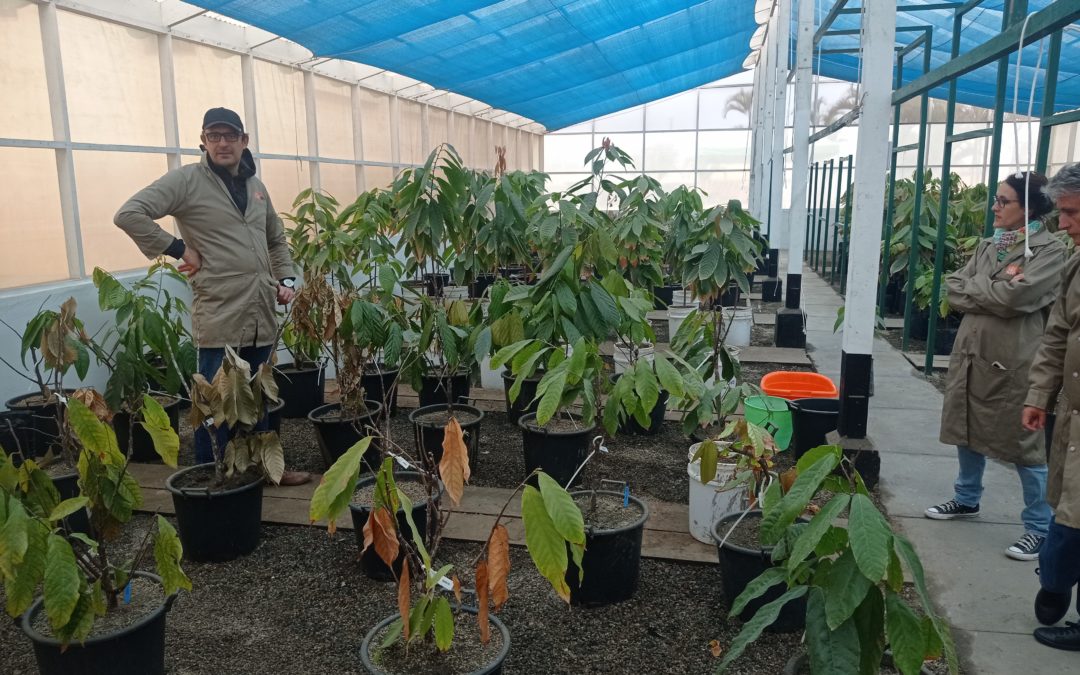The use of cultivars or grafts that can provide a solution to the cadmium problem is one of the alternatives being evaluated in one of the components of the Clima-LoCa project. Thus, the genetics component is being implemented by regional and international institutions with experience in the subject, such as CIRAD, INIAP, AGROSAVIA, Bioversity and CRC. This component focuses on 3 activities:
2.1: Analysis and evaluation of commercial clones to determine the level of cadmium in cocoa beans.
2.2: Identification and testing of promising cocoa genotypes for low cadmium accumulation and drought tolerance, and study of the underlying interactions, mechanisms and genes.
2.3: Piloting of grafting techniques to reduce cadmium accumulation in cocoa beans on smallholder farms.
Currently, the genetics team in different countries is carrying out different activities. For example, in Ecuador, cocoa and soil sampling has been completed, and researchers collected cocoa samples from smallholder hybrids and commercial clones. The samples were processed at the Pichilingue station in Quevedo. Several nursery experiments have already been established for material evaluation and grafting practice.

In the case of Peru, a trial has been implemented in Lima under controlled nursery conditions of genotypes propagated by layering to study the genetic determinism of Cadmium assimilation for the Theobroma cacao species. In Piura, studies have been conducted to evaluate the effect of cup/pattern grafting in the field of Blanco de Piura genotypes on the Cadmium content in cocoa.

In Colombia, cocoa and soil sampling has been carried out for the baseline. In addition, different trials have been implemented, and one of the most advanced is related to water stress, which seeks to evaluate the effect of water deficit on cadmium absorption in different genotypes.

The genetics team continues to advance in the various activities, and it is expected that some of the results obtained will be shared soon.

